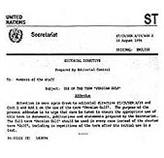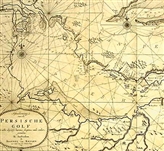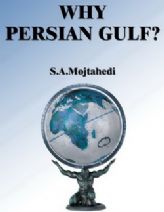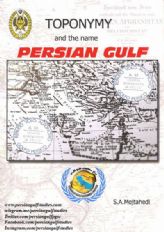US Navy Scary of Iran's Power in Persian Gulf
Date: 3/9/2014 11:15:02 AM
US Navy Scary of Iran's Power in Persian Gulf
TEHRAN (FNA)- Iran's naval capabilities, specially in the Persian Gulf, and its threat to strangle oil tanker traffic through the Straits of Hormuz has scared the US Navy so deeply that it has decided to redress its naval strategy.
American Admirals from the Chief of Naval Operations on down have publicly admitted that the US Navy is weak, at least, when it comes to sea mine warfare.
"What I find amazing is the amount of interest that's being afforded mine warfare by the senior navy leadership," Scott Truver, a naval analyst and author, told AOL defense. "It's all due to the Iranian threat to close the Hormuz Straits."
When asked point-blank whether he was "comfortable" with the Navy's mine-clearing capabilities, the Chief of Naval Operations said bluntly, "No." But, Adm. Jonathan Greenert went on in remarks at the Navy League's Sea-Air-Space symposium last month, "I feel much better than I did six months ago. We've moved about a billion dollars total" from various accounts to weaponry for shallow-water warfare in places like the (Persian) Gulf, and "a lot of that was in mine warfare," Greenert said. "But we have more work to do," he went on. "It's not just the near term issue."
The Navy's long-term solution is a high-tech concept centered around the controversial Littoral Combat Ship, which will serve as a fast, albeit vulnerable, mothership for mine-hunting helicopters and a host of unmanned vehicles. That's definitely more attractive than the traditional approach of sending minesweeping ships, divers, and even trained dolphins straight into the minefield. But the much-delayed mine-countermeasures module for the LCS is still in development, with extensive testing about LCS-2, the Independence, scheduled for this summer. Until it's operational, the Navy's counter-mine capacity remains distinctly limited.
"We've been doing mine countermeasures since 1917 and we still can't get that package ready for production," lamented naval historian and analyst Norman Polmar. For now, "14 minesweepers and two squadrons of helicopters are our nation's entire mine countermeasures capability."
In March, Adm. Greenert made a very public point of ordering more mine-hunting helicopters and ships to the Persian Gulf, noting that the deployment would double the number of Avenger-class minesweepers operating out of Bahrain from four to eight. What he didn't emphasize was that's more than half the nation's entire minesweeper force, leaving just two ships for training in the States and four in Japan to keep an eye on China's estimated arsenal of 100,000 naval mines.
At the moment, moreover, the reinforcements for the Persian Gulf are still en route - not under their own power but hauled aboard heavy-lift ships, since the small minesweepers aren't well-suited to cross oceans on their own. The Navy continues to upgrade the 1980s-vintage minesweepers, recently improving their sonar for example. Overall, however, the Avengers are slow, vulnerable, and increasingly difficult to maintain.
Another obstacle to the high-tech approach is that the LCS's MH-60 Sea Hawk helicopter is simply a lot smaller than the MH-53E Sea Dragon that makes up the US Navy's existing airborne mine-hunting squadrons, which operate off big-deck amphibious warfare ships and carriers. Equipment optimized for the MH-53 needs to be resized for the MH-60, with inevitable losses in capability.
The nascent LCS fleet will face a complex juggling act learning how to use all these new mine-hunting capabilities and its anti-small-boat module and the sub-hunting system, whenever that is operational. In theory, a specialist mine warfare ship would be ideal. In practice, it's only the multi-role potential of the LCS that convinced the Navy to buy them in numbers, and it's only in numbers that a ship can create critical institutional mass.
Historically, mine warfare has been a marginal activity, conducted by a few sailors in a few ships far from the Navy's power centers, aircraft carriers, submarines, and amphibious warfare ships. The fleet has occasionally had mine-warfare panics in the past -- in 1950 after North Korean mines laid by wooden sailing junks kept Douglas MacArthur's invasion force out of Wonsan; in 1991 after Iraqi mines damaged the ships Tripoli and Princeton. "There was a lot of money thrown into mine warfare for three or four years and then attention turned elsewhere," said Truver. "That's my concern: That mine warfare's going to be getting money but then, as priorities change, it's going to be a backwater."
To counter Iran in Persian Gulf waters, the US has a lot to do since the country's naval power has even been acknowledged by foes. In a Sep. 11, 2008 report, the Washington Institute for the Near East Policy also said that in the two decades since the Iraqi imposed war on Iran, the Islamic Republic has excelled in naval capabilities and is able to wage unique asymmetric warfare against larger naval forces.
According to the report, Iran's Navy has been transformed into a highly motivated, well-equipped, and well-financed force and is effectively in control of the world's oil lifeline, the Strait of Hormuz.
The study says that if Washington takes military action against the Islamic Republic, the scale of Iran's response would likely be proportional to the scale of the damage inflicted on Iranian assets.
The Islamic Republic's top military officials have repeatedly warned that in case of an attack by either the US or Israel, the country would target 32 American bases in the Middle East and close the strategic Strait of Hormuz.
An estimated 40 percent of the world's oil supply passes through the waterway.
A recent study by a fellow at Harvard's Olin Institute for Strategic Studies, Caitlin Talmadge, warned that Iran could use mines as well as missiles to block the strait, and that "it could take many weeks, even months, to restore the full flow of commerce, and more time still for the oil markets to be convinced that stability had returned".










